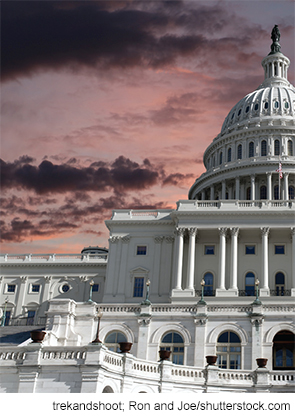
Graduate medical education is underfunded, and the implications of this will affect the future of the otolaryngology workforce, according to academic otolaryngologists interviewed by ENTtoday.
An estimated additional 30 million patients are expected to be covered under the Affordable Care Act starting this year, raising the question of whether there will be enough doctors to treat them. According to the Association of American Medical Colleges (AAMC), some medical schools are responding to this need by increasing the number of students they accept. In 2013, the AAMC reports, 14 medical schools increased their class sizes by more than 10% and several new medical schools opened. Last year, 20,055 students enrolled in their first year of medical school, a 2.8% increase over 2012 levels. The AAMC expects an additional 7,000 medical school graduates each year for the next decade.
Meanwhile, the number of Medicare-funded residency positions hasn’t budged in 17 years.
The Balanced Budget Act of 1997 capped the number of these positions at approximately 100,000, which matters because Medicare is the primary funder of residency programs, distributing $9.5 billion a year through direct and indirect payments to teaching hospitals. A much smaller portion of funding may come from a mix of other federal programs and departments (Medicaid, U.S. Department of Veterans Affairs, U.S. Department of Defense, and so on), state and local governments, and teaching hospitals’ general revenue streams.
The number of applicants for residency positions continues to outpace the number of available positions. Last year, a total of 34,355 applicants competed for 26,392 first-year and 2,779 second-year residency training positions through the National Resident Matching Program.
“We’re seeing a bottleneck in graduate medical education. That’s clearly a message that our legislators are going to need to understand but aren’t fully aware of how to address,” said John Zubialde, MD, associate dean for graduate medical education at the University of Oklahoma School of Medicine in Oklahoma City.
Dr. Zubialde pointed to data from the AAMC showing a shortage of 62,900 physicians predicted by 2015, increasing to 130,600 by 2025. The AAMC based this prediction on the increased medical needs of an aging population and an influx of new patients insured under the ACA.
“The reality is we’re not producing enough doctors to meet projected needs,” Dr. Zubialde said.
Otolaryngology Workforce
What do these numbers mean for otolaryngology? While much has been made about a predicted future shortage in primary care, less is known about how newly ACA-insured patients will affect the medical specialties.
A paper published in 2012 in Otolaryngology-Head and Neck Surgery (146;196-202) reported an estimated demand of 11,127 otolaryngologists in 2025 based on projected population growth and anticipated increases in insurance coverage and noted that this demand would be met with a supply, based on an average retirement age of 65 and no increase in PGY-1 positions, of only 8,627 otolaryngologists. The authors used American Academy of Otolaryngology-Head and Neck Surgery, American Medical Association, and National Resident Matching Program datasets, population census data, and historical physician growth demand curves to model their estimates.
Study co-author David W. Kennedy, MD, a rhinology professor at the University of Pennsylvania School of Medicine in Philadelphia, said that since the article was published, a subcommittee of the AAO-HNS Workforce Committee reevaluated data from the AAO-HNS, the AMA, and the American College of Surgeons and found that the number of practicing U.S.-based otolaryngologists is slightly larger than the 8,600 reported in the analysis he and his co-authors conducted in 2011. Taking into consideration population growth, as well as an aging population, however, the total number of otolaryngologists needed by 2025 will likely be greater than anticipated, he said.
“It is likely that even if there is some continued growth in residency training programs, if otolaryngologists delay their average retirement age until the age of 70, and we have success in recruiting mid-level providers into the specialty, we will still have a shortage of otolaryngologists, if the current ratio of otolaryngologists/population is correct,” Dr. Kennedy said. “This prediction is based on the U.S. census estimates of population growth, the anticipated demands of an aging population, and some increase in the insured population. Accordingly, it is unlikely that the specialty will be able to provide the breadth of services that it currently provides moving forward.”
According to data from the Accreditation Council for Graduate Medical Education (ACGME), 65 otolaryngology residency positions have been added in the past five academic years. These increases aren’t enough to expand the number of specialists to meet demand, said Terry T. Tsue, MD, FACS, physician-in-chief of the University of Kansas Cancer Center; Douglas A. Girod, MD, Endowed Professor of Head and Neck Surgical Oncology; and vice chairman of the department of otolaryngology-head and neck surgery, University of Kansas School of Medicine in Kansas City.
Dr. Tsue, who led the ACGME/ABOto committee that developed the Otolaryngology Milestone Project, explained that each residency position is estimated to cost teaching hospitals over $100,000 a year. This includes the cost of paying a resident’s salary coupled with the institutional and program-specific costs of running a training program but doesn’t include faculty salaries. With the federal government providing the bulk of GME funding since Medicare was established in 1965, other mechanisms to fund current and future training in a significant way aren’t adequately in place, he said.
Dr. Zubialde said that at the University of Oklahoma School of Medicine, approximately 75% of the cost of resident salaries and benefits is paid for by Medicare and Medicaid funds distributed through hospital partners, while 20% comes from a combination of other hospital and departmental funding, and 5% comes from state money.
“Most of us [otolaryngology residency programs] have the capacity to train more residents, but we’re limited by funding,” Dr. Tsue said. “We have plenty of cases residents can gain educationally from, but we don’t have enough funding to get even five more residents, because that’s half a million dollars.”
Legislative Efforts Stalled
Three bills introduced in Congress last year would increase the number of Medicare-funded residency positions by 3,000 per year over the next five fiscal years. None of them have moved beyond the committees to which they were referred. The AAO-HNS has officially thrown its supports behind two of these bills, both titled the Resident Physician Shortage Reduction Act, which were introduced as companion bills in the House and Senate last March.
According to a statement on the AAO-HNS legislative affairs website, “reductions in GME funding will only cripple the nation’s already dwindling physician pipeline and leave Americans with an inadequate supply of physicians, including specialists.”
President Obama’s 2015 fiscal year budget proposes an additional $5.23 billion over 10 years to train primary care residents in underserved areas. It also calls for a $15 billion reduction in payments to teaching hospitals for doctor training and complex patient care. If passed, this cut would restrict the ability of teaching hospitals to train the next generation of physicians, said Lloyd Minor, MD, dean of the Stanford University School of Medicine.
“This insufficiency will have a significant impact on the future of American medicine, making it more difficult for patients to get access to care while extending waiting times for those that do,” he said.
Dr. Zubialde said otolaryngologists can get involved by working with state health departments that are studying workforce planning issues. “This can be a less politicized way to go about it, if done well,” he said. “But if we do engage here, we need to be ready to come with new and fresh ideas and think outside the box and current agendas.” Results will need to be presented to Congressional leaders, he added.
“There is often little sympathy from legislators to put more money toward programs that assist ‘rich doctors,’ Dr. Zubialde said. “The problem with this bias, however, is it ignores the very real issues and needs at hand. Ultimately, it comes down to how best to educate our patients and politicians about the issues.”
Stephanie Mackiewicz is a freelance medical writer based in Los Angeles.

Leave a Reply